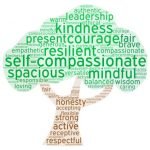Author: pricilagran

by: Elizabeth Mariutto, PsyD, Lindner Center of HOPE, Psychologist and Clinical Director of Partial Hospitalization/Intensive Outpatient Adult Eating Disorder Services
With all of the news and changing regulations in our current times, it can be very hard to manage anxiety and mood related to coronavirus. Below are 10 tips on how to manage your mental health.
1. Limit your access to the news and social media. With everything changing minute by minute, it is easy to find yourself constantly scrolling various sources. Possibly set a certain number of times per day or a set amount of time that you are “allowed” to check one news source that you trust. Some find it helpful to set an appointment with themselves to do so and limit their checking to this appointment. Some phones allow to you track or limit your screen time, which can be a beneficial tool. It can also be helpful to physically put your phone or computer in a separate place, or to go in a separate room from your TV.
2. Practice mindfulness. Try to take it day by day and remember that all of this is temporary. Use of apps such as Headspace and Calm can help promote mindfulness.
3. Use gratitude. Identify 1-3 things each day that you are grateful for. Don’t neglect things that we take for granted, such as our physical health, the ability to use technology to keep us connected, and all of those working at those grocery stores to keep the shelves stocked as much as possible.
4. Focus on what matters in the big picture. Taking steps to practice social distancing is to help our healthcare system avoid being overwhelmed and to help healthcare workers save lives. These could be those that you love, or loved ones of your loved ones.
5. Stay active. Exercise releases endorphins and can help us stay both physically and emotionally happy when done in moderation.
6. Go outside. Vitamin D can positively impact our mood and energy level, and a great source is from the sun.
7. Stay connected with others. This is key when practicing social distancing. Facetime is a great way to be present with those you love without increasing anyone’s risk.
8. Perform acts of service. Volunteering can lead to improvements in mental health, so offering to bring groceries to an elderly neighbor or donating to a local food pantry can both help others as well as boost our mood.
9. Engage in hobbies. One of the best ways to fight depression is to engage in behavioral activation, or do things that are fun for you. This may be a great time to try a new recipe if you enjoy cooking, or to take that online course on photography.
10. Get connected with resources if needed. Many therapists are switching to use of different technologies for therapy to help with social distancing, and you can find self-help resources online to help cope with stress











